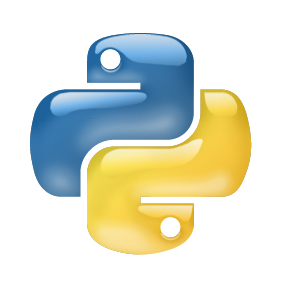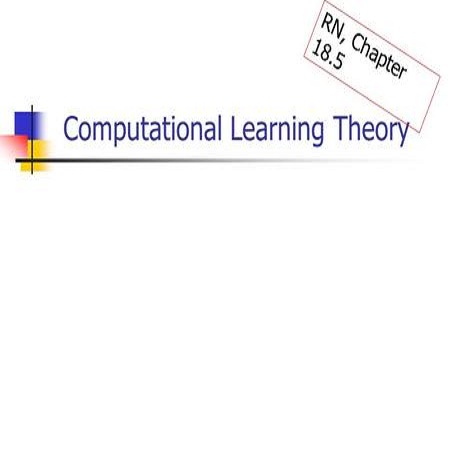With increasing deployment of machine learning systems in various real-world tasks, there is a greater need for accurate quantification of predictive uncertainty. While the common goal in uncertainty quantification (UQ) in machine learning is to approximate the true distribution of the target data, many works in UQ tend to be disjoint in the evaluation metrics utilized, and disparate implementations for each metric lead to numerical results that are not directly comparable across different works. To address this, we introduce Uncertainty Toolbox, an open-source python library that helps to assess, visualize, and improve UQ. Uncertainty Toolbox additionally provides pedagogical resources, such as a glossary of key terms and an organized collection of key paper references. We hope that this toolbox is useful for accelerating and uniting research efforts in uncertainty in machine learning.
相關內容
This work focuses on the space-time reduced-order modeling (ROM) method for solving large-scale uncertainty quantification (UQ) problems with multiple random coefficients. In contrast with the traditional space ROM approach, which performs dimension reduction in the spatial dimension, the space-time ROM approach performs dimension reduction on both the spatial and temporal domains, and thus enables accurate approximate solutions at a low cost. We incorporate the space-time ROM strategy with various classical stochastic UQ propagation methods such as stochastic Galerkin and Monte Carlo. Numerical results demonstrate that our methodology has significant computational advantages compared to state-of-the-art ROM approaches. By testing the approximation errors, we show that there is no obvious loss of simulation accuracy for space-time ROM given its high computational efficiency.
Deep Reinforcement Learning (DRL) and Deep Multi-agent Reinforcement Learning (MARL) have achieved significant success across a wide range of domains, such as game AI, autonomous vehicles, robotics and finance. However, DRL and deep MARL agents are widely known to be sample-inefficient and millions of interactions are usually needed even for relatively simple game settings, thus preventing the wide application in real-industry scenarios. One bottleneck challenge behind is the well-known exploration problem, i.e., how to efficiently explore the unknown environments and collect informative experiences that could benefit the policy learning most. In this paper, we conduct a comprehensive survey on existing exploration methods in DRL and deep MARL for the purpose of providing understandings and insights on the critical problems and solutions. We first identify several key challenges to achieve efficient exploration, which most of the exploration methods aim at addressing. Then we provide a systematic survey of existing approaches by classifying them into two major categories: uncertainty-oriented exploration and intrinsic motivation-oriented exploration. The essence of uncertainty-oriented exploration is to leverage the quantification of the epistemic and aleatoric uncertainty to derive efficient exploration. By contrast, intrinsic motivation-oriented exploration methods usually incorporate different reward agnostic information for intrinsic exploration guidance. Beyond the above two main branches, we also conclude other exploration methods which adopt sophisticated techniques but are difficult to be classified into the above two categories. In addition, we provide a comprehensive empirical comparison of exploration methods for DRL on a set of commonly used benchmarks. Finally, we summarize the open problems of exploration in DRL and deep MARL and point out a few future directions.
Deep neural networks have significantly contributed to the success in predictive accuracy for classification tasks. However, they tend to make over-confident predictions in real-world settings, where domain shifting and out-of-distribution (OOD) examples exist. Most research on uncertainty estimation focuses on computer vision because it provides visual validation on uncertainty quality. However, few have been presented in the natural language process domain. Unlike Bayesian methods that indirectly infer uncertainty through weight uncertainties, current evidential uncertainty-based methods explicitly model the uncertainty of class probabilities through subjective opinions. They further consider inherent uncertainty in data with different root causes, vacuity (i.e., uncertainty due to a lack of evidence) and dissonance (i.e., uncertainty due to conflicting evidence). In our paper, we firstly apply evidential uncertainty in OOD detection for text classification tasks. We propose an inexpensive framework that adopts both auxiliary outliers and pseudo off-manifold samples to train the model with prior knowledge of a certain class, which has high vacuity for OOD samples. Extensive empirical experiments demonstrate that our model based on evidential uncertainty outperforms other counterparts for detecting OOD examples. Our approach can be easily deployed to traditional recurrent neural networks and fine-tuned pre-trained transformers.
The difficulty in specifying rewards for many real-world problems has led to an increased focus on learning rewards from human feedback, such as demonstrations. However, there are often many different reward functions that explain the human feedback, leaving agents with uncertainty over what the true reward function is. While most policy optimization approaches handle this uncertainty by optimizing for expected performance, many applications demand risk-averse behavior. We derive a novel policy gradient-style robust optimization approach, PG-BROIL, that optimizes a soft-robust objective that balances expected performance and risk. To the best of our knowledge, PG-BROIL is the first policy optimization algorithm robust to a distribution of reward hypotheses which can scale to continuous MDPs. Results suggest that PG-BROIL can produce a family of behaviors ranging from risk-neutral to risk-averse and outperforms state-of-the-art imitation learning algorithms when learning from ambiguous demonstrations by hedging against uncertainty, rather than seeking to uniquely identify the demonstrator's reward function.
Modern online advertising systems inevitably rely on personalization methods, such as click-through rate (CTR) prediction. Recent progress in CTR prediction enjoys the rich representation capabilities of deep learning and achieves great success in large-scale industrial applications. However, these methods can suffer from lack of exploration. Another line of prior work addresses the exploration-exploitation trade-off problem with contextual bandit methods, which are less studied in the industry recently due to the difficulty in extending their flexibility with deep models. In this paper, we propose a novel Deep Uncertainty-Aware Learning (DUAL) method to learn deep CTR models based on Gaussian processes, which can provide efficient uncertainty estimations along with the CTR predictions while maintaining the flexibility of deep neural networks. By linking the ability to estimate predictive uncertainties of DUAL to well-known bandit algorithms, we further present DUAL-based Ad-ranking strategies to boost up long-term utilities such as the social welfare in advertising systems. Experimental results on several public datasets demonstrate the effectiveness of our methods. Remarkably, an online A/B test deployed in the Alibaba display advertising platform shows an $8.2\%$ social welfare improvement and an $8.0\%$ revenue lift.
The notion of uncertainty is of major importance in machine learning and constitutes a key element of machine learning methodology. In line with the statistical tradition, uncertainty has long been perceived as almost synonymous with standard probability and probabilistic predictions. Yet, due to the steadily increasing relevance of machine learning for practical applications and related issues such as safety requirements, new problems and challenges have recently been identified by machine learning scholars, and these problems may call for new methodological developments. In particular, this includes the importance of distinguishing between (at least) two different types of uncertainty, often refereed to as aleatoric and epistemic. In this paper, we provide an introduction to the topic of uncertainty in machine learning as well as an overview of hitherto attempts at handling uncertainty in general and formalizing this distinction in particular.
Embedding models for deterministic Knowledge Graphs (KG) have been extensively studied, with the purpose of capturing latent semantic relations between entities and incorporating the structured knowledge into machine learning. However, there are many KGs that model uncertain knowledge, which typically model the inherent uncertainty of relations facts with a confidence score, and embedding such uncertain knowledge represents an unresolved challenge. The capturing of uncertain knowledge will benefit many knowledge-driven applications such as question answering and semantic search by providing more natural characterization of the knowledge. In this paper, we propose a novel uncertain KG embedding model UKGE, which aims to preserve both structural and uncertainty information of relation facts in the embedding space. Unlike previous models that characterize relation facts with binary classification techniques, UKGE learns embeddings according to the confidence scores of uncertain relation facts. To further enhance the precision of UKGE, we also introduce probabilistic soft logic to infer confidence scores for unseen relation facts during training. We propose and evaluate two variants of UKGE based on different learning objectives. Experiments are conducted on three real-world uncertain KGs via three tasks, i.e. confidence prediction, relation fact ranking, and relation fact classification. UKGE shows effectiveness in capturing uncertain knowledge by achieving promising results on these tasks, and consistently outperforms baselines on these tasks.
The era of big data provides researchers with convenient access to copious data. However, people often have little knowledge about it. The increasing prevalence of big data is challenging the traditional methods of learning causality because they are developed for the cases with limited amount of data and solid prior causal knowledge. This survey aims to close the gap between big data and learning causality with a comprehensive and structured review of traditional and frontier methods and a discussion about some open problems of learning causality. We begin with preliminaries of learning causality. Then we categorize and revisit methods of learning causality for the typical problems and data types. After that, we discuss the connections between learning causality and machine learning. At the end, some open problems are presented to show the great potential of learning causality with data.
Data augmentation has been widely used for training deep learning systems for medical image segmentation and plays an important role in obtaining robust and transformation-invariant predictions. However, it has seldom been used at test time for segmentation and not been formulated in a consistent mathematical framework. In this paper, we first propose a theoretical formulation of test-time augmentation for deep learning in image recognition, where the prediction is obtained through estimating its expectation by Monte Carlo simulation with prior distributions of parameters in an image acquisition model that involves image transformations and noise. We then propose a novel uncertainty estimation method based on the formulated test-time augmentation. Experiments with segmentation of fetal brains and brain tumors from 2D and 3D Magnetic Resonance Images (MRI) showed that 1) our test-time augmentation outperforms a single-prediction baseline and dropout-based multiple predictions, and 2) it provides a better uncertainty estimation than calculating the model-based uncertainty alone and helps to reduce overconfident incorrect predictions.
Recent years have witnessed significant progresses in deep Reinforcement Learning (RL). Empowered with large scale neural networks, carefully designed architectures, novel training algorithms and massively parallel computing devices, researchers are able to attack many challenging RL problems. However, in machine learning, more training power comes with a potential risk of more overfitting. As deep RL techniques are being applied to critical problems such as healthcare and finance, it is important to understand the generalization behaviors of the trained agents. In this paper, we conduct a systematic study of standard RL agents and find that they could overfit in various ways. Moreover, overfitting could happen "robustly": commonly used techniques in RL that add stochasticity do not necessarily prevent or detect overfitting. In particular, the same agents and learning algorithms could have drastically different test performance, even when all of them achieve optimal rewards during training. The observations call for more principled and careful evaluation protocols in RL. We conclude with a general discussion on overfitting in RL and a study of the generalization behaviors from the perspective of inductive bias.




